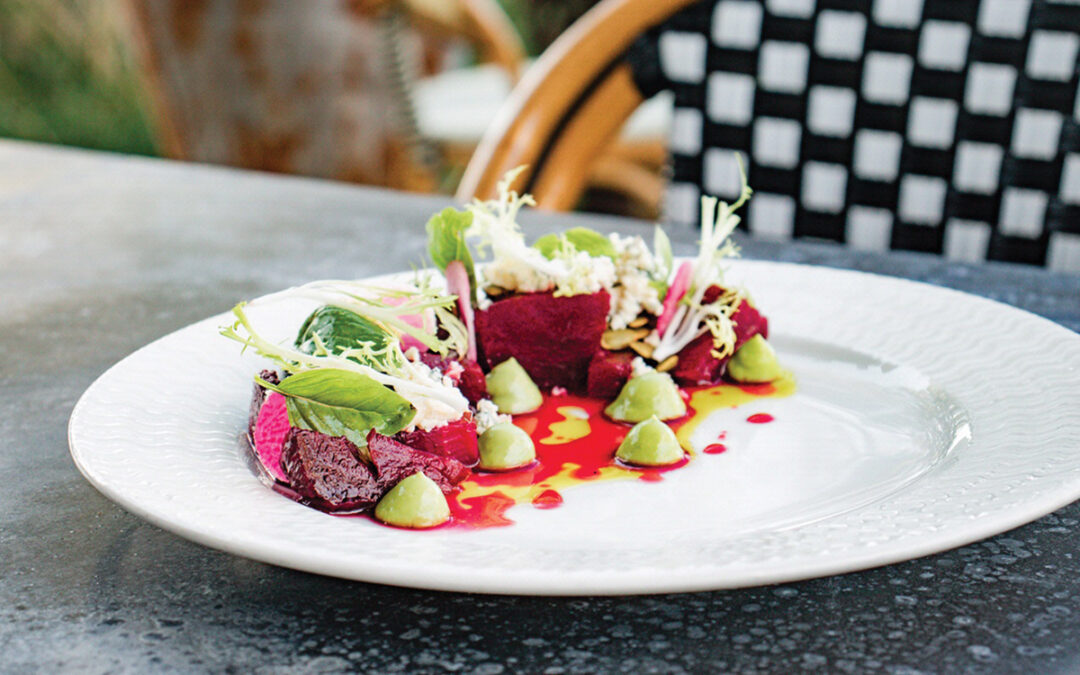It pays to shake things up. The usual MO for reviews is to take along people familiar with the cuisine in question; that way we can all bring varying degrees of perspective and expertise to the table. Literally. But occasionally it’s instructive (and fun, too, we always want a fun component) to address a cuisine with companions who have no knowledge of it whatsoever. How is that possible in today’s Food Channel-obsessed culture? Easy: think Korean.
Though there have been Korean restaurants in the Alamo City for years, it’s only within the last decade or so that the cuisine has begun to make a serious impression on our culinary consciousness; many people have yet to give it a try. (Your critic, on the other hand, has been sneaking around to sample come-and-go Korean cooking in the backs of Asian grocery stores for almost the same amount of time.) So it wasn’t hard to find a willing couple to come along to Ilsong Garden; it’s something they had long wanted to do, lacking only a final nudge.
Ilsong’s Young Cacy was the first chef/owner of a Korean restaurant to bring the foods to our attention — helped along in no small part by the admiration of thrill-seeking chefs. It was at her debut restaurant, Korean BBQ House on Rittiman Road, that many of us first sampled raw skate served atop chilled buckwheat noodles (if memory serves) with a side of fiery chili paste. It was challenging and thrilling all at once — not really like Chinese or Japanese but with elements of each contributing to a new, and distinct, whole. Many readers’ and critics’ choice awards followed. A name change was inspired by the move to a new location. The setting is finer but some of the more challenging items dropped off the menu to be replaced by a new category called “Chef Young’s Ultimate Menu for the Discerning Palate.” Of course, it’s understandable that a chef should want to step outside the zone to explore new dishes. It should be equally defensible that someone in search of an authentic Korean experience wouldn’t expect to find Sweet and Sour Fish (“Personally selected cod or red snapper deep fried in a delicate batter and served with a topping of either vegetables or pineapple and cherries”) on the same menu. It was in this context that the Asian Store Stalker and the Korean Cuisine Innocents approached Ilsong one wintry evening.
Yaki mandu are a good start for anyone unfamiliar with Korean cuisine — precisely because these dumplings many know as potstickers or gyoza from other cultures may be the most familiar item on a menu. The half-moon-shaped dumplings are fried on one side, steamed on the other, and are often filled with a pork and vegetable stuffing. Chef Young fills hers with a mixture of beef, vegetable and noodles. We all agreed the dumplings really need the soy-sesame dip. Pushing the envelope a little more, we moved on to the vegetable pancake, kimchi option. Kimchi, the Korean specialty of chili-spiked fermented cabbage, daikon and other optional vegetables, is something we could eat by the quart — and have been known to do so. For those familiar with Vietnamese cuisine, the pancake resembles, to a degree, their banh xeo — though it’s wrapped around its main ingredients. At Ilsong the batter is based on potato starch, the pancake is dense and a little oily, but the tart flavors play beautifully with the crusty exterior. It was dubbed the “pizza.” Texans accustomed to barbecue will find Korea’s bulgogi a no-brainer — no wonder it’s probably the country’s most popular export. Thinly sliced beef, rib-eye in this case, is first marinated in a mixture that includes soy, sugar and sesame seeds and/or oil, and the strips are then cooked quickly “over an open flame.” In what seemed like a breach of serving sequence, the entrée bulgogi came to the table with the panchan, those endlessly fascinating small bowls of assorted palate teasers that are a feature of every Korean table.
To be honest, we could make a meal of these morsels of kimchi, chili-coated daikon, crisp, vinegared gherkins … and, in this case, an unfamiliar potato dish. There are often challenging and unidentifiable ingredients, too (we usually suspect dried parts of sea creatures), and we say bring ‘em on; you can always move on to another if one doesn’t please. It’s harder to move on with a main dish. Fiery stir-fries are fondly remembered from the original location, so in tribute, one featuring octopus was selected. (You can’t coddle the neophytes, we say.) There was less resistance from the newbies than expected; there was some on the part of the octopus, which was a little chewy. But we’re tough ourselves; we can take a little chewy.
We agreed on the stir-fry. And we also agreed on the opulent Jam Pong, billed as a “spicy seafood stew … the best of the best.” It’s an impressive presentation, brought to the table steaming and ladled out into individual bowls by the server. A brace of huge, head-on shrimp can’t be ignored; they’re messy to eat but well worth the effort. The scallops are tender and fine.
Dessert is not emphasized in most Asian cultures, but Tom Cacy, Chef Young’s husband and chief table-toucher, convinced us to try the fried ice cream — a tempura batter coating a pound-cake-wrapped scoop of the frozen treat.









0 Comments